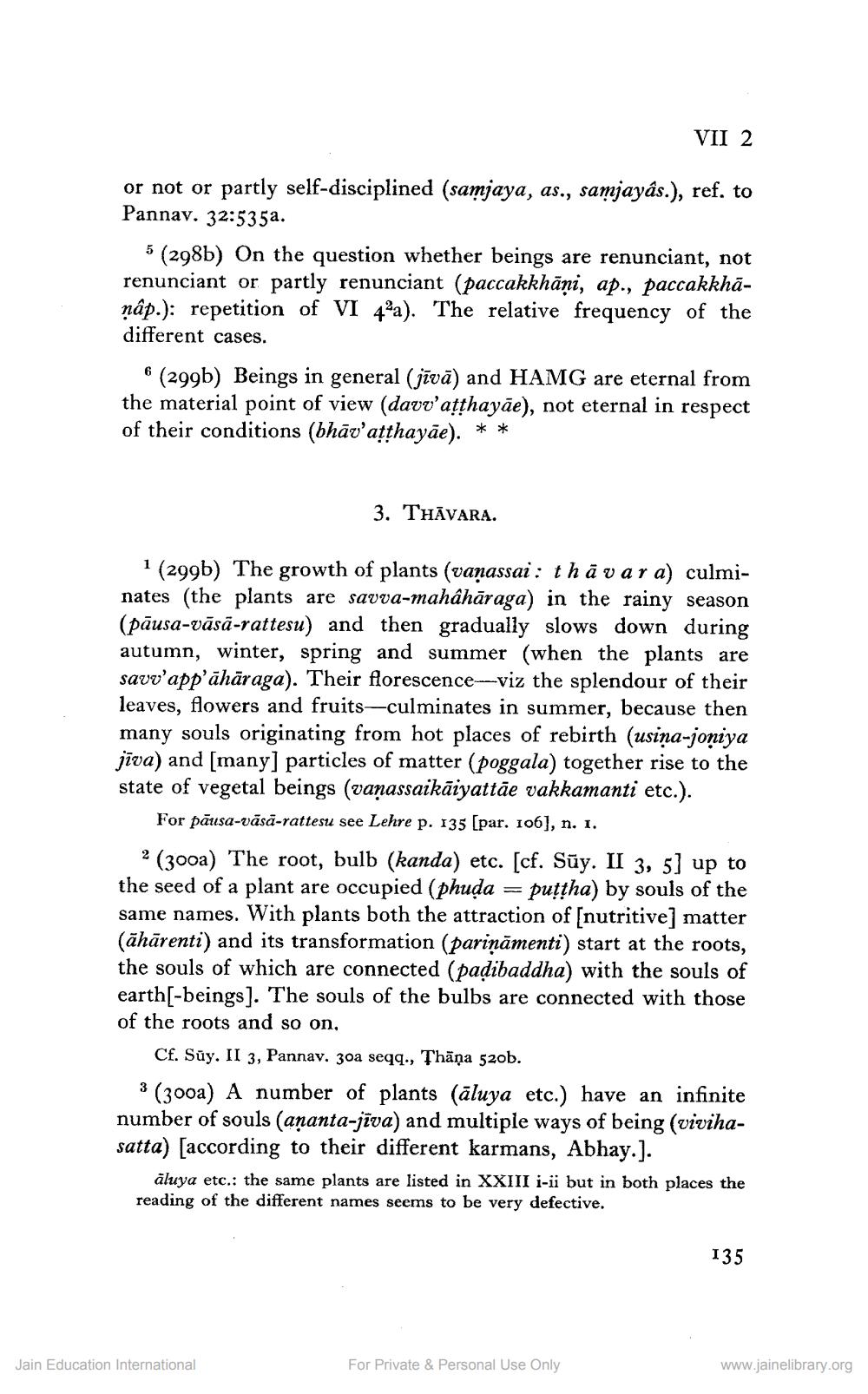________________
VII 2
or not or partly self-disciplined (samjaya, as., samjayâs.), ref. to Pannav. 32:535a.
5 (298b) On the question whether beings are renunciant, not renunciant or partly renunciant (paccakkhāni, ap., paccakkhānáp.): repetition of VI 42a). The relative frequency of the different cases.
6 (299b) Beings in general (jīvā) and HAMG are eternal from the material point of view (davv'atthayāe), not eternal in respect of their conditions (bhāv'atthayāe). **
3. THĀVARA.
1 (299b) The growth of plants (vanassai : thāvar a) culminates (the plants are savva-mahâhāraga) in the rainy season (pāusa-vāsā-rattesu) and then gradually slows down during autumn, winter, spring and summer (when the plants are savv'app'āhāraga). Their florescence ---viz the splendour of their leaves, flowers and fruits-culminates in summer, because then many souls originating from hot places of rebirth (usiņa-joniya jīva) and (many) particles of matter (poggala) together rise to the state of vegetal beings (vanassaikāiyattāe vakkamanti etc.).
For pāusa-vāsā-rattesu see Lehre p. 135 [par. 106], n. 1. ? (3002) The root, bulb (kanda) etc. [cf. Sūy. II 3, 5] up to the seed of a plant are occupied (phuda = puţtha) by souls of the same names. With plants both the attraction of [nutritive] matter (āhārenti) and its transformation (pariņāmenti) start at the roots, the souls of which are connected (padibaddha) with the souls of earth[-beings]. The souls of the bulbs are connected with those of the roots and so on.
Cf. Suy. II 3, Pannav. 30a seqq., Thäņa 520b. 3 (3001) A number of plants (āluya etc.) have an infinite number of souls (ananta-jīva) and multiple ways of being (vivihasatta) [according to their different karmans, Abhay.).
āluya etc.: the same plants are listed in XXIII i-ii but in both places the reading of the different names seems to be very defective.
135
Jain Education International
For Private & Personal Use Only
www.jainelibrary.org




